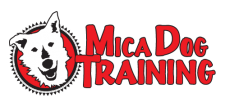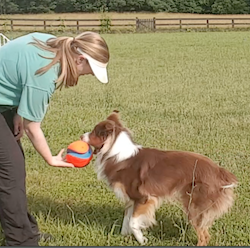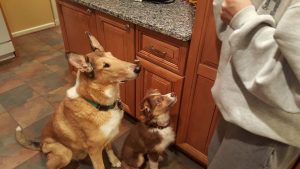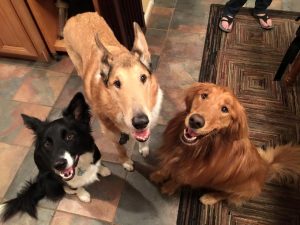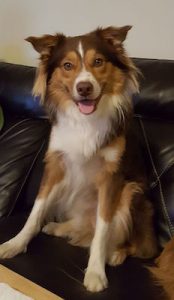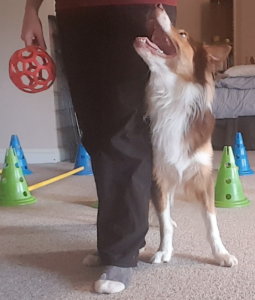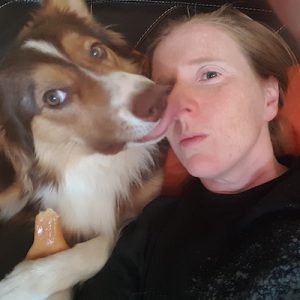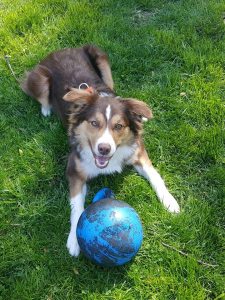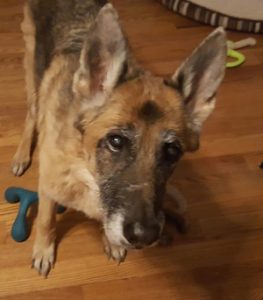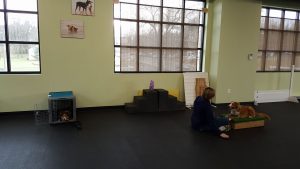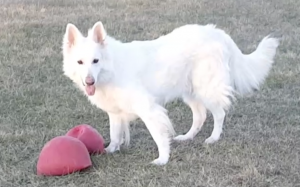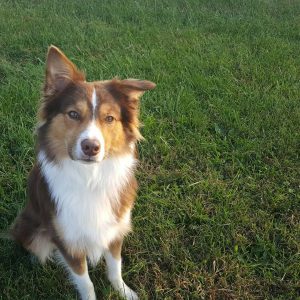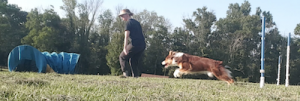When in doubt, throw food. In Gambit’s agility training so far I’ve really tried to apply some very good advice I heard from one of my favorite trainers, Hannah Branigan.
Melissa Breau: So, what is the best piece of training advice that you’ve ever heard?
Hannah Branigan: Oh, that one’s easy. So, Leslie Nelson: “When in doubt, throw food.”
And I fall back on that all the time. Whenever there’s a question, something weird comes up in a training session or even at home, I don’t know what to do right now, that was a very weird behavior and I have no idea how I should handle it, throw a handful of food on the ground, and while they’re gobbling the food, I can think about my solution, and it turns out that there’s a whole lot of behavior problems out there in the world that we can solve in very practical ways by throwing a handful of food at them.
Melissa Breau: Both to give ourselves five minutes to think and to give them something else to do?
Hannah Branigan: Exactly.
Fenzi Dog Sports Podcast: Episode 03: Interview with Hannah Branigan, http://fenzidogsports.libsyn.com/2017/01
I’ve adapted this advice for Gambit’s training. He’s not very food motivated and would much prefer a toy reward. So for us, it’s when in doubt, throw the ball or toss the Frisbee. This has served us very well so far.
Often when I go back and watch videos of our agility training sessions I am very glad I threw the ball. Gambit is almost always correct, or he really thinks he is, which is equally important. In agility I want Gambit to cue off of what my body is telling him to do, move the direction my feet are pointed, take the jump or other obstacle I am indicating. Video often reveals that I am not indicating the jump I think I am or Gambit thinks I am asking for a blind cross when I’m not, etc.
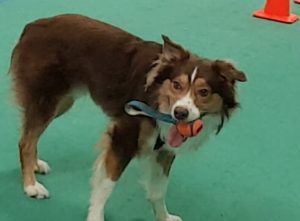
Throwing the ball and rewarding even when I think Gambit is incorrect means that he stays in the game. He loves agility and really loves running fast. So far, I think my greatest agility accomplishment is that Gambit just turned 2 years old and still wants to go very fast. My bumbling handling has not significantly decreased his speed.
If I told Gambit he was wrong all the times I initially thought he was wrong he would have slowed down and eventually stopped enjoying the game that is our training. He’s rarely actually wrong and when he is it’s my job to find another way to explain things. My handling is slowly improving, very slowly, but my boy still loves to play agility with me as we both improve.
This short video (0:22) shows Gambit and I working on sending to the tunnel. I want him to take the far entrance. On the first try Gambit takes the “wrong” entrance and uses the entrance closer to me. At the time, I wasn’t sure why he didn’t take the far entrance but I went ahead and rewarded him anyway since I wasn’t sure what had happened. When we tried again a few moments later I made the entrance a bit easier by moving a bit closer toward it and he went in the “correct” entrance and did so with speed. Watching the video later I was glad I rewarded both entrances. My feet were pointing toward the tunnel closest to me on the first try. What I thought I was telling him to do wasn’t what my body was actually indicating. Gambit wasn’t “wrong” the first time and by rewarding his initial effort he was still very enthusiastic when we tried again.
My most important job is to keep Gambit in the game. We want to be fast and have fun and play at agility. The best way to make that happen is to when in doubt, throw the ball or toss some food.
